Transdisciplinary research ideally builds upon both scientific approaches and practical knowledge from stakeholders. However, in advanced stages of the research process, how should the knowledge transfer of relevant research results to local stakeholders take place? The example of Namibian land users shows that knowledge has to be prepared and communicated in a target group-specific way. The more you know about the target group in question and the earlier you take the upcoming knowledge transfer into account, the easier this process will be. Although there are phases during the transfer process during which the focus is on the transfer of knowledge from research to practice, it is important not to view this communication process as a one-way street, but as a genuine dialogue.
Introduction
Climate change, land management, as well as demographic and economic developments are increasing the pressure on natural resources worldwide. This often results in conflicts of use. Integrated management strategies are essential to render the relationship between nature and society more sustainable. This is particularly true for the semi-arid regions in southern Africa. Here, the challenges of securing a livelihood are increasing for different reasons such as overexploitation of soils and climate change.
Yet there is still a lack of knowledge on how land use in semi-arid regions can be adapted to the changing conditions. Here, research may be able to answer open questions related to new land management practices. Ideally, research to improve this knowledge is transdisciplinary in nature and incorporates the practical knowledge of stakeholders in the development of applicable solutions. But it doesn’t stop there: Stakeholder knowledge is also required to put the proposed solutions into practice Only through appropriate and targeted knowledge transfer and capacity building among all stakeholders involved will this new knowledge reach those areas where it can effectively contribute to a development towards sustainability and where it can help to implement possible strategies.
This blog post is a shortened version of a policy brief that was written at an advanced stage of a transdisciplinary research process. After having outlined the Namibian context, we offer a process model that outlines the considerations and planning that need to be made during the advanced stages of a project in order to achieve knowledge transfer, especially when research results are already available. We illustrate the individual steps using examples from the research project ‘ORYCS – Options for sustainable land use adaptations in savanna systems’ that integrates Namibian rural land users for the development of applicable solutions and also strives to pass on the results of this research process to them appropriately.
td research: Joint learning processes pave the way to an effective knowledge transfer
Transdisciplinary research addresses real-world problems and attempts to integrate a variety of knowledge and perspectives. Therefore, it is considered a genuine approach to sustainability research: In joint learning processes between science and society, it links the search for applicable solutions to problems with scientific knowledge. The requirement for sustainable solutions is stakeholder participation during the research process. The stakeholders’ views on problems and their everyday and practical knowledge are then merged with scientific questions and findings. This knowledge integration ensures that the results of research can be equally linked to science and society.
The integration of local and/or practice knowledge is an integral part of all phases of the transdisciplinary research processes. Therefore, and as mentioned above, knowledge transfer should generally be understood as a two-way exchange: from research to practice but equally from practice to research. We will show how knowledge transfer can and should be thought of and implemented as part of a mutual learning process between science and practice. In line with that, we reflected upon and communicated the research results together with the target groups based on a shared understanding of applicable content and appropriate discussion contexts. During this process, the respective needs, requirements and capabilities of the stakeholders were taken into account.
During the ORYCS research process, the team used interactive dialogue formats to bring to light the local knowledge of land users and to learn about their motives for action and their knowledge formations. In other words, the researchers learned from them and became aware of their needs. Knowledge was thus created as part of an exchange process and included insights into how the results of research can find their way into practice. The findings underpin the present text and refer to a specific example from the Namibian project context
Rangeland management in Namibia and the challenges for knowledge transfer
Given the increasing number of studies and projects related to climate change, sustainable practices and conservation, it is vital that the important information and insights generated actually reach the people affected: Their future way of life depends to a considerable extent on how well they understand their own actions against the background of changing climatic conditions.
Namibia is one of the least populated countries in the world, but it is important to know that in 2020 over half of the population was living in the larger towns and cities. The rest of the country consists of private farms, communal land and conservation areas. The majority of these rural areas are savannas and are mainly utilised for wildlife and livestock grazing. Despite the relatively small rural population, livestock production is undertaken on approximately 70 % of Namibia’s total land area with much of it being highly vulnerable to land degradation. Direct management and use of the savanna is therefore closely tied to this rural population. As land users interact directly with the ecosystem, they are of great importance for knowledge transfer within conservation and sustainability. Bottom-up transformations towards sustainable practices as well as knowledge transfer strategies therefore need to specifically target these rural land users.
The latter form a highly heterogeneous group, making knowledge transfer tasks particularly challenging. Every influencing factor such as education and language, socio-economic conditions, lifestyle and access to media must be considered with great sensitivity. The formats of transfer, the language and the means of dissemination need to be adapted to the needs of the specific target groups. Now, how does that look like in practice?
Process model and recommendations for action
We present a process model to highlight the iterative character of knowledge transfer during or after a research phase and discuss the different elements using examples that relate specifically to rural land users in Namibia. The great heterogeneity within this target group means that this is a very challenging but, precisely for that reason, typical example of knowledge transfer. As far as possible, we consider this heterogeneity by addressing a variety of options and requirements so that differences within the target group are addressed.
The following recommendations are intended to contribute to a better understanding of knowledge transfer, to facilitate the design of transfer processes, and to provide suggestions and support for the concrete implementation of transfer processes.
For a successful transfer process, the key steps of the process model should always be implemented. These steps structure the whole procedure of transfer as shown in the process model (Fig. 1; and are described in detail in the Table in the Policy Brief). Once the first two steps (‘determining the impact’ and ‘identifying and understanding the target group’) have been completed, the process can also be iterative.
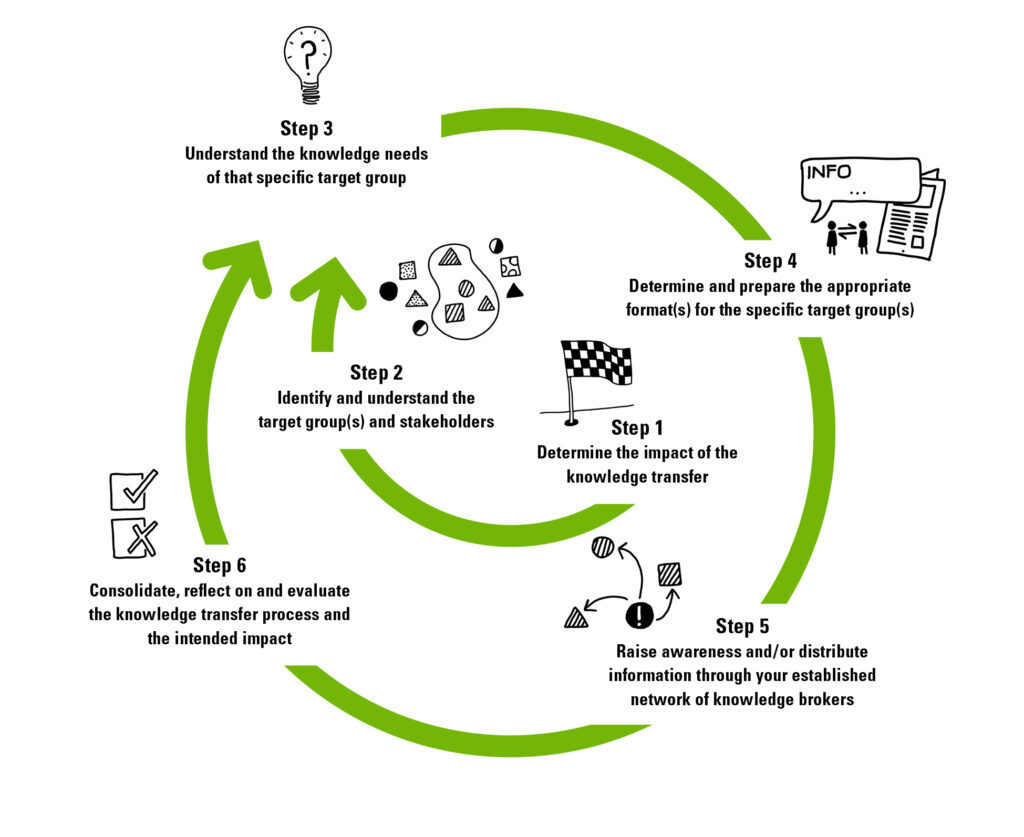
Generally speaking, the earlier stakeholders are involved in a particular research project, or the sooner an exchange is realised, and the more local and/or practical knowledge has been integrated into the (transdisciplinary) research process, the more successful knowledge transfer activities can be. At this point, however, there is still great potential for further research.
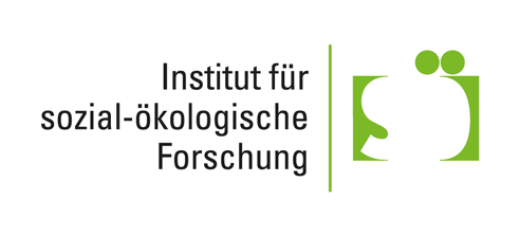
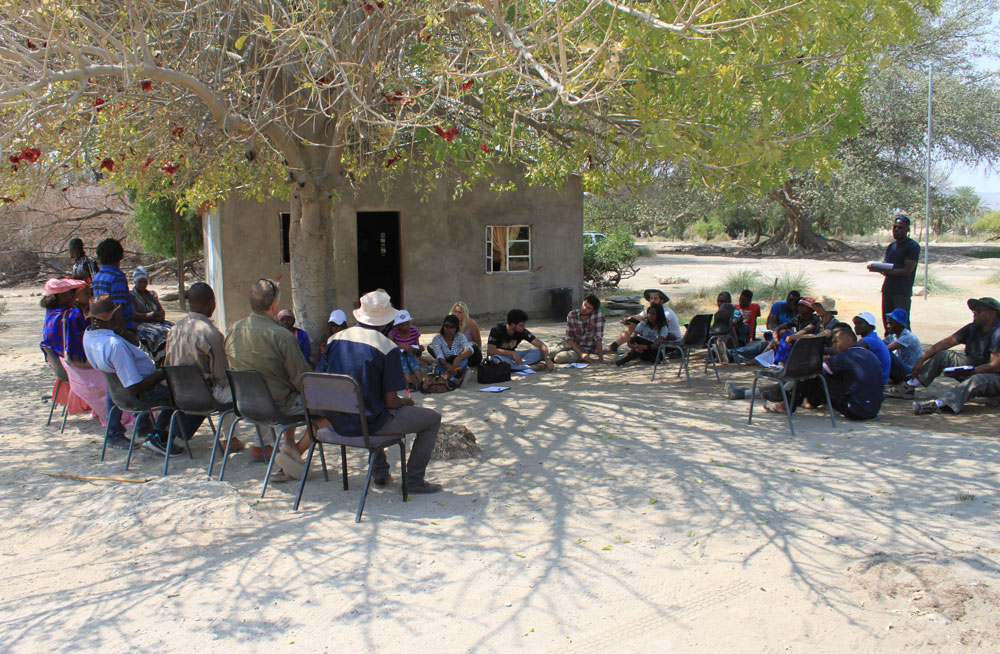
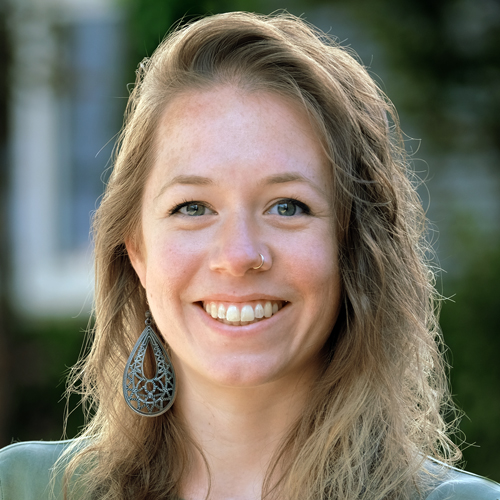

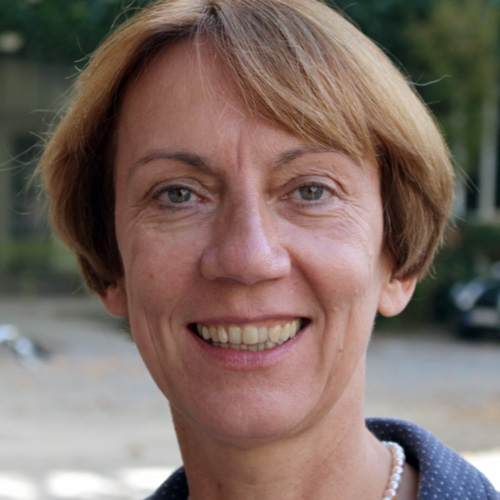

0 Kommentare zu “Avoiding pitfalls in knowledge transfer. A guide using the example of communication with Namibian land users”